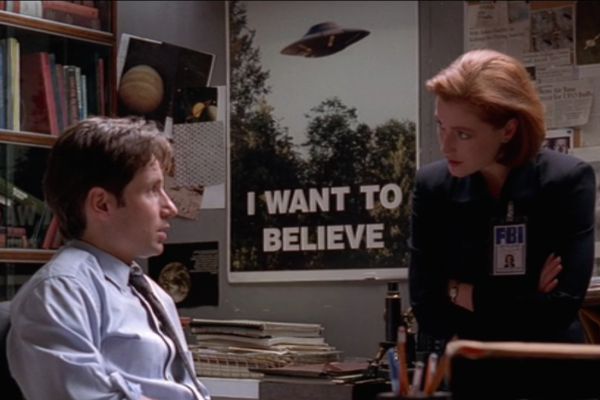 Let’s see how deep the rabbit-hole goes. Just a reworded movie quote sure, but the context is perhaps more applicable to real life than we normally assume. Somehow the brief mention of the Cellular Automata (CA) in a previous post sparked an extensive digital expedition on the subject.
Let’s see how deep the rabbit-hole goes. Just a reworded movie quote sure, but the context is perhaps more applicable to real life than we normally assume. Somehow the brief mention of the Cellular Automata (CA) in a previous post sparked an extensive digital expedition on the subject.
I guess it beats watching television, which, as a side-note, I stopped doing about 6 months ago, highly recommended. What inspired me to research further is the apparent elegance of CA systems, the almost instinctive notion that these could be a key element of something bigger. Or maybe just some kind of occupational obsession, that is possible too.
Anyway, first stop on my journey was Konrad Zuse, a German computer science pioneer who built the first computer, the Z3, completed in 1941. I did not know much about him but calling Zuse a genius and visionary is probably apt. Ironically the German government decided further development of the machine, an electronic successor to the Z3, to be “strategically unimportant”…In his book Calculating Space Zuse hypothesized that the Universe itself could be a deterministic computational structure, a CA, its physical laws discrete. These theories were later expanded upon by Edward Fredkin, who in turn introduced the term digital physics, although later he preferred the use the term digital philosophy.
That phrase got me to a paper by philosophy professor Nick Bostrom, called Are you living in a computer simulation? Thought provoking is an understatement, although probably more a mental exercise than anything else. Also in that category and an entertaining read, The Holographic Universe by Michael Talbott (public domain).
So let’s get back to hard science, and the ultimate kicker of the journey. Check out the work of particle physics professor Dr. James Gates Jr., specializing in super-string and super-symmetry theories. Admittedly I definitely hit the boundaries of my understanding here, light reading it is not. So from an interview:
Gates: “How could we discover whether we live inside a Matrix? One answer might be ‘Try to detect the presence of codes in the laws that describe physics.’” And this is precisely what he has done. Specifically, within the equations of super-symmetry he has found, quite unexpectedly, what are called “doubly-even self-dual linear binary error-correcting block codes. “This unsuspected connection suggests that these codes may be ubiquitous in nature, and could even be embedded in the essence of reality. If this is the case, we might have something in common with the Matrix science-fiction films, which depict a world where everything human being’s experience is the product of a virtual-reality-generating computer network.” Lastly, all of this would also imply a Creator. Mind blown.

 My review of the Lovecraft audio-books narrated by Wayne June still needs work. Instead, since I am already invested in the subject and related ones, let’s take a look at the influence Lovecraft had and still has on movies.
My review of the Lovecraft audio-books narrated by Wayne June still needs work. Instead, since I am already invested in the subject and related ones, let’s take a look at the influence Lovecraft had and still has on movies.
 Trust no one. Once exclusively the motto of a diagnosed paranoid, at present possibly a little bit more accepted as a legitimate worldview. The internet has facilitated not only the rise of independent news sources but also their fringe spin offs where conspiracy theories run rampant. And to spice things up, sometimes these theories actually have some truth in them. People love it and for the curious and open minded among them it is a treasure trove. Very valuable as well if you are Chris Carter and looking for material, so perhaps the time is right for an X-Files reboot. After watching the first episode some 23 years ago (doesn’t that make you feel ancient…) I was hooked. The subject matter and of course the chemistry between Mulder and Scully made the show top notch. Well at least until they lost the plot and it finally all fell apart. The new mini series (6 episodes) will premiere on January 24. The first reviews are already in and not promising, but I Want To Believe.
Trust no one. Once exclusively the motto of a diagnosed paranoid, at present possibly a little bit more accepted as a legitimate worldview. The internet has facilitated not only the rise of independent news sources but also their fringe spin offs where conspiracy theories run rampant. And to spice things up, sometimes these theories actually have some truth in them. People love it and for the curious and open minded among them it is a treasure trove. Very valuable as well if you are Chris Carter and looking for material, so perhaps the time is right for an X-Files reboot. After watching the first episode some 23 years ago (doesn’t that make you feel ancient…) I was hooked. The subject matter and of course the chemistry between Mulder and Scully made the show top notch. Well at least until they lost the plot and it finally all fell apart. The new mini series (6 episodes) will premiere on January 24. The first reviews are already in and not promising, but I Want To Believe. Today, Lovecraft is considered to be one of the most influential writers in the realms of (weird) science-fiction and otherworldly horror. Elements of so called Lovecraftian horror can be found in numerous books, movies, computer games and more. In his days however he had to make ends meet (barely) by publishing his stories in pulp magazines such as Weird Tales. Back then, Lovecraft was probably only held in high regard within his small circle of friends with whom he corresponded almost continuously. Biographer L. Sprague de Camp estimates Lovecraft wrote nearly 100.000 letters during his lifetime.
Today, Lovecraft is considered to be one of the most influential writers in the realms of (weird) science-fiction and otherworldly horror. Elements of so called Lovecraftian horror can be found in numerous books, movies, computer games and more. In his days however he had to make ends meet (barely) by publishing his stories in pulp magazines such as Weird Tales. Back then, Lovecraft was probably only held in high regard within his small circle of friends with whom he corresponded almost continuously. Biographer L. Sprague de Camp estimates Lovecraft wrote nearly 100.000 letters during his lifetime. The mentioned inability to correlate all the contents of the world (or universe) was maybe something Lovecraft himself considered merciful (or wished to be true). While science tried its hardest to prove otherwise and was taking huge leaps, he remained skeptical of it’s discoveries and frightful of the new horizons. After all, besides knowledge science also did expand the “unknown”.
The mentioned inability to correlate all the contents of the world (or universe) was maybe something Lovecraft himself considered merciful (or wished to be true). While science tried its hardest to prove otherwise and was taking huge leaps, he remained skeptical of it’s discoveries and frightful of the new horizons. After all, besides knowledge science also did expand the “unknown”. The carefully structured and long sentences, rich in adjectives and descriptions, to me they always appeared to be some kind of sculpture or Escher lithograph made out of words. Recently I found the works of
The carefully structured and long sentences, rich in adjectives and descriptions, to me they always appeared to be some kind of sculpture or Escher lithograph made out of words. Recently I found the works of  The Borrowed World from Franklin Horton depicts a post apocalyptic scenario, where the USA is dealt a crippling blow by ISIS terrorists. Jim Powell and his co-workers were en route, on a business trip, and now find themselves stranded hundreds of miles from home. Their mission: to get back to their loved ones as soon as possible. That is the core of the book, the terrorist attack merely provides the necessary circumstances and is not dealt with in great detail, nor very original for that matter.
The Borrowed World from Franklin Horton depicts a post apocalyptic scenario, where the USA is dealt a crippling blow by ISIS terrorists. Jim Powell and his co-workers were en route, on a business trip, and now find themselves stranded hundreds of miles from home. Their mission: to get back to their loved ones as soon as possible. That is the core of the book, the terrorist attack merely provides the necessary circumstances and is not dealt with in great detail, nor very original for that matter.